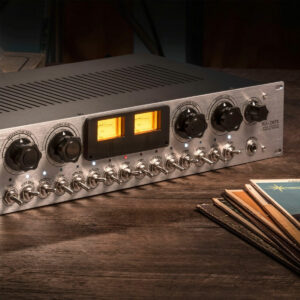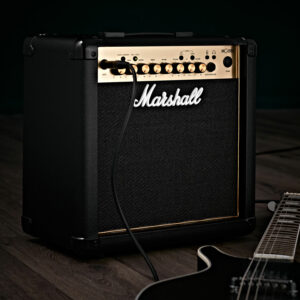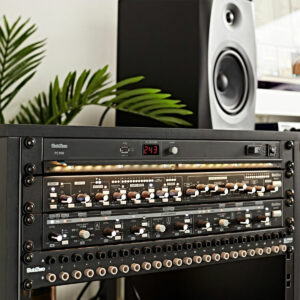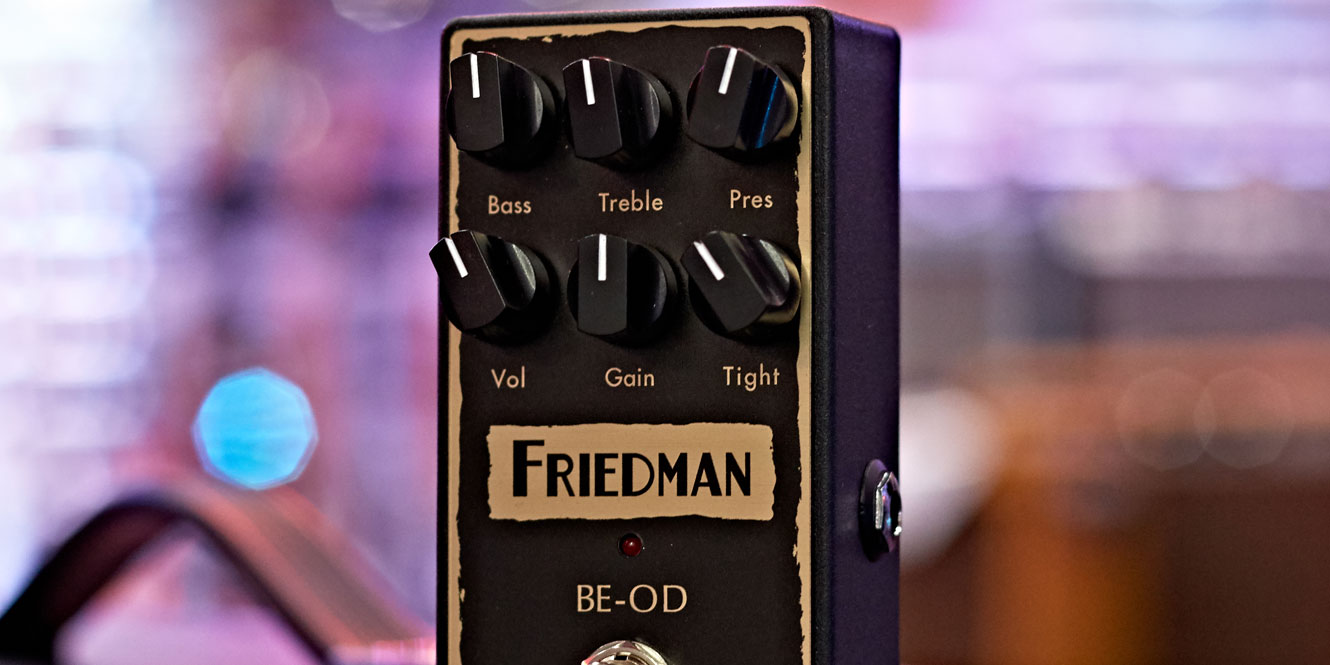Understanding gain vs. volume can aid you in many ways when it comes to making, mixing, and performing music. From studio work to live performances, being able to differentiate between the two and knowing exactly which elements of your mix they control will help you achieve the best possible sound quality.
In a nutshell, ‘gain’ refers to the loudness of an input, whereas ‘volume’ is all about the output. But what exactly does this mean? In this article, we’ll discuss the main differences between these terms and how different audio gear and DAWs interpret the two definitions.
Key takeaways
Here are the main things you need to know about gain and volume:
| Gain | Volume |
|---|---|
| The loudness of an input | The loudness of an output |
| Can control tone and character of sound | Controls only loudness - not tone |
| Can be pushed to extreme levels to create distortion | Usually means the decibel output - can be for sound systems, DAWs, mixers, and more |
Gain vs. volume
Gain
 The term ‘gain’ has undergone significant transformations over time. In the good old days of analog technology, interpreting ‘gain’ was as simple as ABC. However, with the advent of digital technology, the definition has been expanded, referring to multiple characteristics including volume, dB output, and even distortion.
The term ‘gain’ has undergone significant transformations over time. In the good old days of analog technology, interpreting ‘gain’ was as simple as ABC. However, with the advent of digital technology, the definition has been expanded, referring to multiple characteristics including volume, dB output, and even distortion.
Sometimes, ‘gain’ is just a fancy synonym for volume, indicating the decibel (dB) output of a system. This usage is common among a huge variety of digital plugins, where ‘makeup gain’ on a compressor is pretty much just modifying the output volume.
However, most of the time, ‘gain’ refers to the dB input of a system. This distinction is as important as choosing the right guitar pick because it’s all about the volume level before any processing takes place.
Let’s break it down further. Imagine gain as the boss of an audio source before it goes through any form of processing. It’s the one calling the shots on the volume level that gets fed into various devices such as plugins, preamps, and amplifiers. Dictating the intensity of an audio source post-processing doesn’t change the tone of the sound. However, its intensity before processing can make a world of difference.
Back in the era of analog technology, when vinyl records were the most popular music format, gain was used in two main ways. Firstly, it was applied via the microphone preamp to boost the level of the microphone. This tweak would then determine how the analog tech within the recording console affected the sound. Secondly, gain was also used on guitar amps to crank up the level of the guitar.
Most guitars came with both a gain knob and a volume knob, just like having both ketchup and mustard on a hot dog. This setup allowed for a hefty amount of gain to be pumped into the amp, overloading it, while keeping the volume at a comfortably quiet level using the volume knob.
This technique birthed the creation of guitar distortion, achieved by overloading the guitar amp with gain to the point where the speaker couldn’t process the guitar sound cleanly. So, in some situations, gain has been linked to a third definition – distortion. This association highlights the complexity and adaptability of the concept of gain in music production and audio engineering.
Whether it’s used on amps, channel strips, preamps, or audio interfaces, or used in different scenarios like microphone preamps and analog-to-digital converters, gain is fundamental in shaping the quality and character of sound. It’s just as important as understanding music theory and what sounds good to your ear.
Volume
 The term ‘volume’ is relatively uncomplicated compared to gain. Primarily, it refers to the decibel (dB) output from a sound system; in layman’s terms, it’s the measure of how loud something becomes post-processing.
The term ‘volume’ is relatively uncomplicated compared to gain. Primarily, it refers to the decibel (dB) output from a sound system; in layman’s terms, it’s the measure of how loud something becomes post-processing.
To put it even more simply, volume equates to loudness — what you hear after a sound has been processed.
In the process of mixing, volume is the level that gets dispatched from the channel to the stereo output or any bus to which you might be transmitting. If you’re using a guitar amplifier, volume corresponds to the loudness setting on the amp.
In essence, volume controls the loudness of the output from a channel or amplifier, not the tonal quality.
To illustrate this with an everyday example, think about the volume knob in your car, which adjusts the stereo’s loudness. It couldn’t be simpler!
As a rule, volume is gauged in dB Sound Pressure Level (SPL).
Gain controls the amplification of a sound source before it undergoes processing, while volume manages the loudness of a sound source after it has been processed.
What is gain staging?
 The phrase “gain staging” may sound familiar, and there’s a good reason for it: it’s essential in the world of audio. This is the process of maintaining a consistent decibel (dB) level of a sound throughout an entire processing system.
The phrase “gain staging” may sound familiar, and there’s a good reason for it: it’s essential in the world of audio. This is the process of maintaining a consistent decibel (dB) level of a sound throughout an entire processing system.
In simpler terms, it ensures that the level of the sound entering a channel is the same as the one exiting it.
Why is gain staging so crucial? We tend to perceive louder sounds as superior to softer ones. So, if the loudness level varies from one plugin to another, we might misjudge whether the plugin improves the instrument’s sound or merely amplifies it, hindering our judgment.
To avoid this, we need to apply gain staging to each plugin used. Let’s take a compressor, for example. It’s vital to use the makeup gain to compensate for any volume lost, thereby ensuring consistent loudness.
A gain stage refers to any point in the audio signal path where the track’s overall level can be adjusted. This adjustment could be done with a fader or the output controls of plugins like compressors and equalizers (EQs).
Gain staging, in this context, is the process of managing levels in each part of the signal path to prevent unwanted noise or distortion.
The concept of gain staging has evolved over time. In the era before digital recording, gain staging meant recording at super high levels to ensure the signal was well above the noise floor/hiss of analog machines. With the advent of modern digital recording, it was initially believed that recording at high levels would prevent signal degradation during the conversion process.
However, advancements in converter quality have shown that this is not the case. This fundamental understanding and application of gain staging is crucial for anyone working with audio, ensuring accurate judgement and the best possible sound.
FAQs
What is the difference between master volume and gain?
The difference between master volume and gain is that gain affects the tone of your sound whilst the master volume controls the overall loudness of multiple audio sources. Using a combination of controlled gain and master volume with give you the best possible results when it comes to mixing and mastering.
What is the difference between volume and gain in DJ?
The difference between volume and gain for DJs is that the gain level is the audio going into your system/mixer whilst the volume dictates the output level of your gear. Whilst it’s fundamentally the same definition in the music world, DJs also get hands-on with the gain knobs on their mixer, allowing them to set the tone as well as the overall output level (volume).
Is higher gain better audio?
Higher gain does not mean better audio. Usually the lower the gain capabilities of a piece of audio gear translates into improved audio fidelity and overall sound quality. For example, mic preamps that advertise ‘ultra-low gain’ capabilities mean you can record input sources at quieter levels without distortion or unwanted hum.
Final thoughts
Hopefully, this article has given you a clear understanding of gain vs. volume. Whether you’re a budding music producer, DJ or audio engineer, these two terms are something you are going to come across frequently when playing live or mixing music in the studio – so it helps to know how they differ!














Very helpful explanation – thank you!